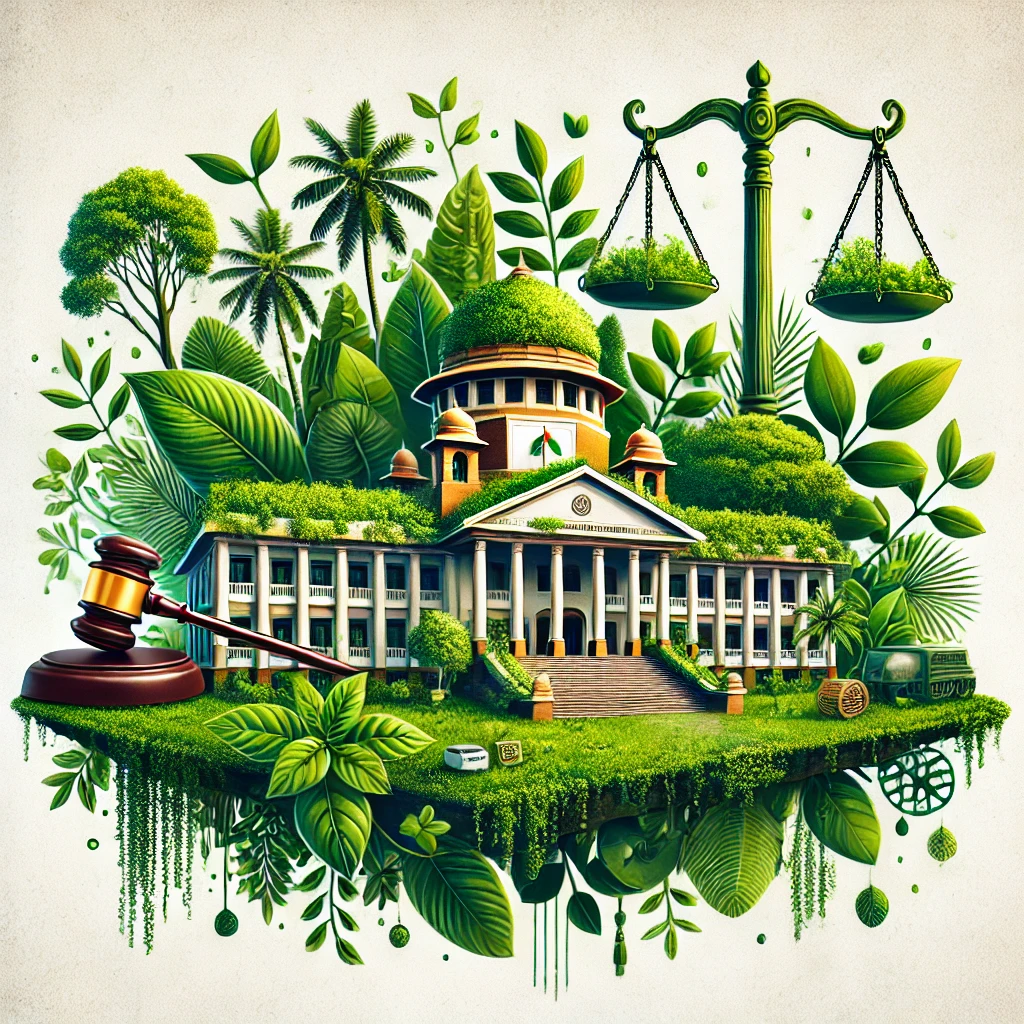Environmental laws at Zimbabwe
Zimbabwe has a set of environmental laws aimed at the sustainable management of the country’s natural resources, protection of biodiversity, and reduction of pollution. These laws are designed to address the conservation of land, water, wildlife, forests, and air quality, and to regulate the extraction and use of natural resources. However, like many countries, Zimbabwe faces challenges with the enforcement of these laws due to political, economic, and resource constraints.
Here is an overview of the key environmental laws and regulations in Zimbabwe:
1. The Environmental Management Act (EMA) [Chapter 20:27] – 2002
Purpose: The Environmental Management Act (EMA) is the principal environmental legislation in Zimbabwe, aiming to promote sustainable development and environmental protection.
Key Provisions:
Environmental Management Agency (EMA): The Act established the Environmental Management Agency (EMA), which is responsible for coordinating environmental matters and enforcing environmental laws in Zimbabwe.
Environmental Impact Assessments (EIA): The law requires that an Environmental Impact Assessment (EIA) be conducted before embarking on projects that may have significant environmental impacts, including large-scale developments like mining, infrastructure projects, and industrial operations.
Pollution Control: The EMA is responsible for regulating pollution from industrial activities, agriculture, and other sources. It sets limits on emissions and discharges of pollutants into the air, water, and land.
Waste Management: The Act includes provisions for the management of waste, including the prevention of illegal dumping and the promotion of waste reduction, recycling, and disposal methods.
Sustainable Development: The law mandates the integration of environmental considerations into economic and development planning to ensure sustainable resource use and minimize environmental degradation.
2. The Parks and Wildlife Act [Chapter 20:14] – 1975
Purpose: This Act governs the conservation and management of Zimbabwe’s wildlife and protected areas, with a focus on the protection of wildlife species, their habitats, and the sustainable use of natural resources in protected areas.
Key Provisions:
Creation of National Parks and Game Reserves: The Act establishes and manages national parks, game reserves, and wildlife sanctuaries in Zimbabwe. These areas are designated for the conservation of wildlife and ecosystems.
Wildlife Protection: It provides for the protection of wildlife species, prohibiting poaching, hunting of endangered species, and illegal wildlife trade. It also regulates sustainable hunting practices in wildlife management areas.
Regulation of Game Parks and Hunting: The law provides guidelines for the sustainable management of wildlife resources, including game ranching and the management of trophy hunting.
CITES Compliance: The Act also enforces Zimbabwe's compliance with international conventions, particularly the Convention on International Trade in Endangered Species of Wild Fauna and Flora (CITES), to protect endangered species like elephants and rhinos.
3. The Forest Act [Chapter 19:05] – 1999
Purpose: This Act regulates the management and conservation of Zimbabwe’s forest resources, which are vital for the environment and economy.
Key Provisions:
Forest Protection and Management: The Act provides for the sustainable management of forests, including the prevention of illegal logging and the promotion of reforestation and afforestation efforts.
National Forests: It designates national forests and provides for the establishment and management of state forests to conserve timber and other forest resources.
Community Participation: The law encourages local communities to participate in sustainable forest management and benefit from forest products in a way that protects the environment.
Regulation of Timber and Non-Timber Products: It governs the sustainable extraction of timber and non-timber forest products (e.g., fruits, medicinal plants, and firewood).
4. The Water Act [Chapter 20:24] – 1998
Purpose: This Act regulates the use and management of Zimbabwe’s water resources, aiming to ensure the availability of water for various sectors while protecting the environment.
Key Provisions:
Water Resource Management: The Act establishes the legal framework for the allocation, distribution, and sustainable management of water resources, including surface and groundwater.
Water Quality Protection: It sets standards for water quality and establishes regulations for the prevention of water pollution, particularly from industrial activities, agriculture, and urban development.
Water Permits: The Act requires individuals and organizations to obtain permits for the extraction and use of water, ensuring that water use is controlled and regulated.
National Water Authority: It empowers the Zimbabwe National Water Authority (ZINWA) to oversee the management of water resources and the construction of water infrastructure such as dams and irrigation systems.
5. The Air Pollution Control Act – 2009
Purpose: This law addresses air quality and pollution control, specifically targeting industrial emissions, vehicle exhaust, and other sources of air pollution in Zimbabwe.
Key Provisions:
Emissions Standards: The law sets limits on the levels of pollutants, including particulate matter, nitrogen oxides, sulfur dioxide, and carbon monoxide, that can be released into the air by industries, vehicles, and other sources.
Air Quality Monitoring: It provides for the monitoring of air quality in major cities and industrial areas to ensure compliance with emissions standards.
Pollution Reduction: The law includes measures for reducing pollution from industrial activities, encouraging cleaner production methods, and enforcing penalties for non-compliance.
6. The Land Acquisition Act [Chapter 20:10] – 1992
Purpose: This Act governs the acquisition and use of land in Zimbabwe, including the allocation of land for agriculture, industrial development, and conservation purposes.
Key Provisions:
Land Redistribution: The Act is part of Zimbabwe’s land reform program, which seeks to redistribute land from large commercial farmers to local communities and smallholder farmers.
Sustainable Land Use: It encourages sustainable land use practices, including proper land management to prevent soil erosion, desertification, and deforestation.
Land Use Planning: The law provides for the establishment of land use planning mechanisms to ensure that land is used in ways that are environmentally sustainable and economically beneficial.
7. The Environmental Impact Assessment (EIA) Regulations – 1997
Purpose: These regulations are part of the broader environmental management framework in Zimbabwe, focusing on the requirement for EIA to be conducted for certain projects that may have significant environmental impacts.
Key Provisions:
EIA Process: The regulations require that a detailed EIA be conducted for projects such as large infrastructure developments, mining, agriculture, and industrial activities.
Public Consultation: It includes provisions for public participation in the EIA process, allowing communities and other stakeholders to provide input on potential environmental impacts.
Assessment and Monitoring: The regulations mandate the monitoring of projects after approval to ensure that environmental mitigation measures are implemented and that adverse effects are minimized.
8. The Mining Law (Minerals Act) – 1961
Purpose: The Mining Law governs the exploration and extraction of minerals in Zimbabwe, including the environmental impact of mining activities.
Key Provisions:
Mineral Exploration and Extraction: The law regulates the exploration, extraction, and use of mineral resources, including gold, platinum, diamonds, and coal.
Environmental Restoration: It requires mining companies to rehabilitate mining sites once operations have concluded, restoring ecosystems and addressing issues such as soil erosion, water pollution, and deforestation caused by mining activities.
Regulation of Toxic Substances: The law addresses the handling of toxic substances and waste produced during mining processes, ensuring that they do not pollute water sources or harm ecosystems.
9. The Conservation of Biological Diversity Act – 2002
Purpose: This law aims to conserve Zimbabwe’s rich biodiversity, including its flora, fauna, and ecosystems, and to regulate the sustainable use of biological resources.
Key Provisions:
Biodiversity Protection: The Act provides mechanisms for the protection of endangered species and ecosystems, including establishing national parks and wildlife reserves.
Sustainable Use of Resources: It encourages the sustainable use of biological resources, including the regulation of wildlife trade and the management of ecosystems for both conservation and economic purposes.
Access and Benefit Sharing: The law regulates access to genetic resources and ensures that the benefits derived from their use are shared fairly, particularly with local communities.
10. The National Environment Policy – 2009
Purpose: This policy outlines Zimbabwe’s long-term goals for environmental management and sustainable development.
Key Provisions:
Sustainable Development Goals: It emphasizes the integration of environmental sustainability into all sectors of the economy, including agriculture, energy, mining, and industry.
Pollution Control: The policy highlights the need for controlling pollution, including air, water, and land pollution, and outlines strategies for reducing environmental degradation.
Climate Change Mitigation and Adaptation: The policy includes provisions for addressing climate change, such as promoting renewable energy and reducing greenhouse gas emissions.
Challenges and Enforcement
While Zimbabwe has a solid legal framework for environmental protection, enforcement remains a significant challenge due to:
Political and Economic Instability: Political and economic instability in Zimbabwe has affected the country’s ability to effectively enforce environmental laws and regulations.
Resource Constraints: Limited financial and human resources available to government agencies like the Environmental Management Agency (EMA) make it difficult to carry out inspections, monitoring, and enforcement effectively.
Illegal Activities: Issues such as illegal logging, poaching, unregulated mining, and unsustainable agricultural practices continue to put pressure on the environment.
Conclusion
Zimbabwe has a comprehensive set of environmental laws aimed at conserving natural resources, protecting wildlife, reducing pollution, and ensuring sustainable development. However, challenges related to enforcement, political and economic issues, and illegal activities complicate the effectiveness of these laws. More efforts are needed to strengthen the implementation of these environmental laws and promote public awareness of environmental conservation.




























0 comments